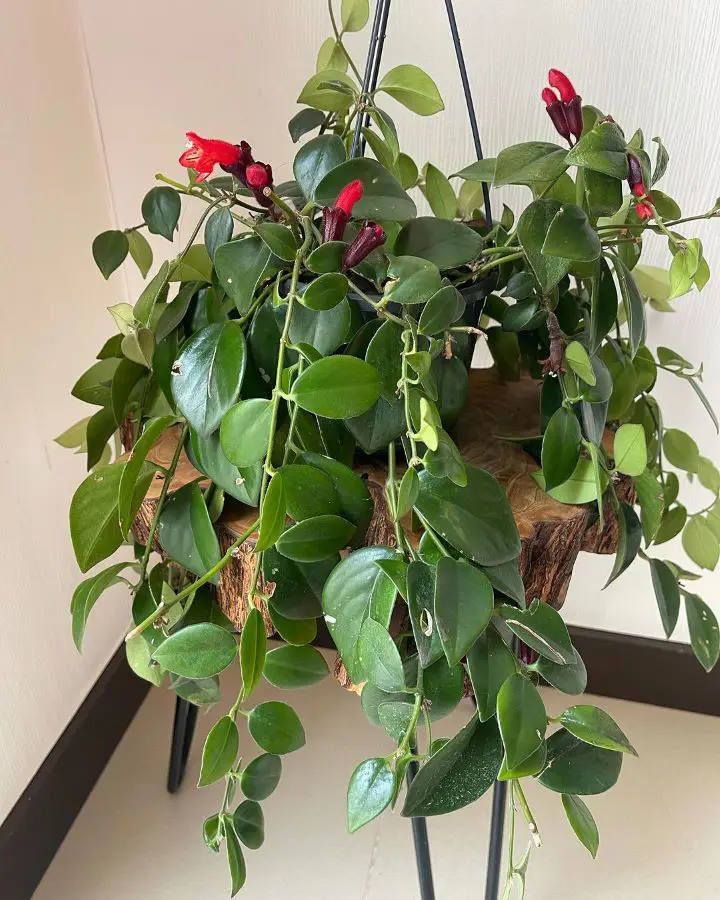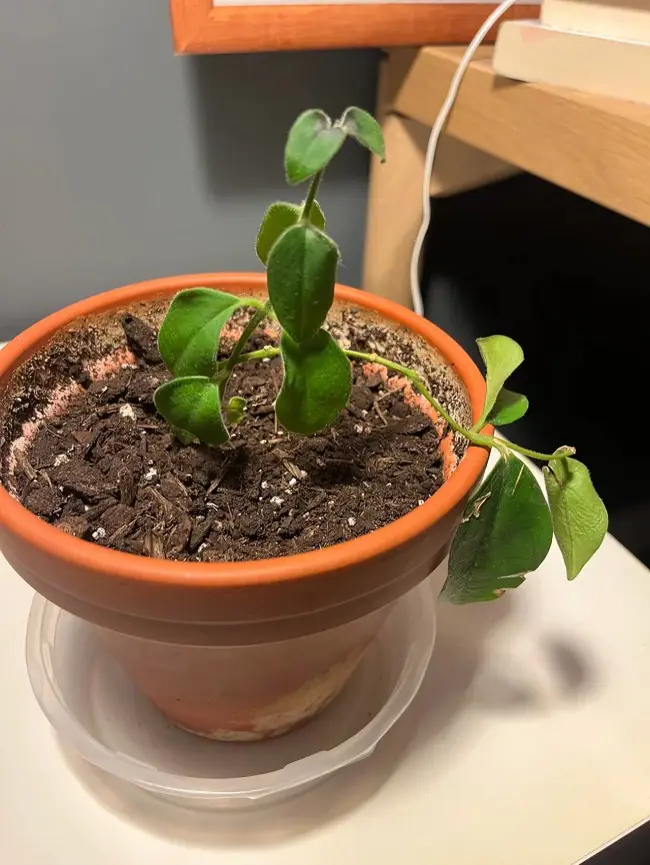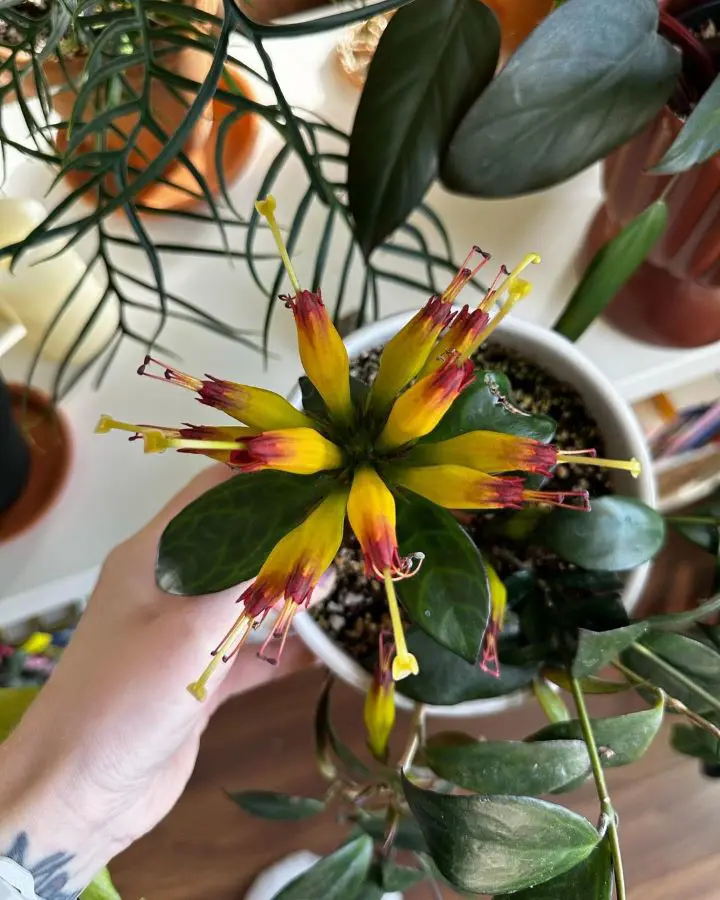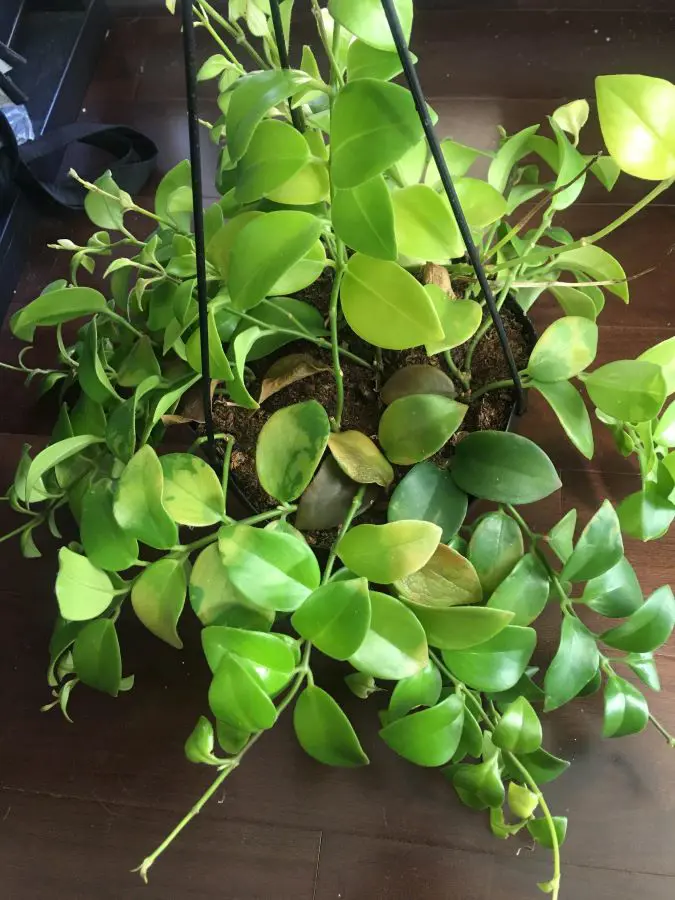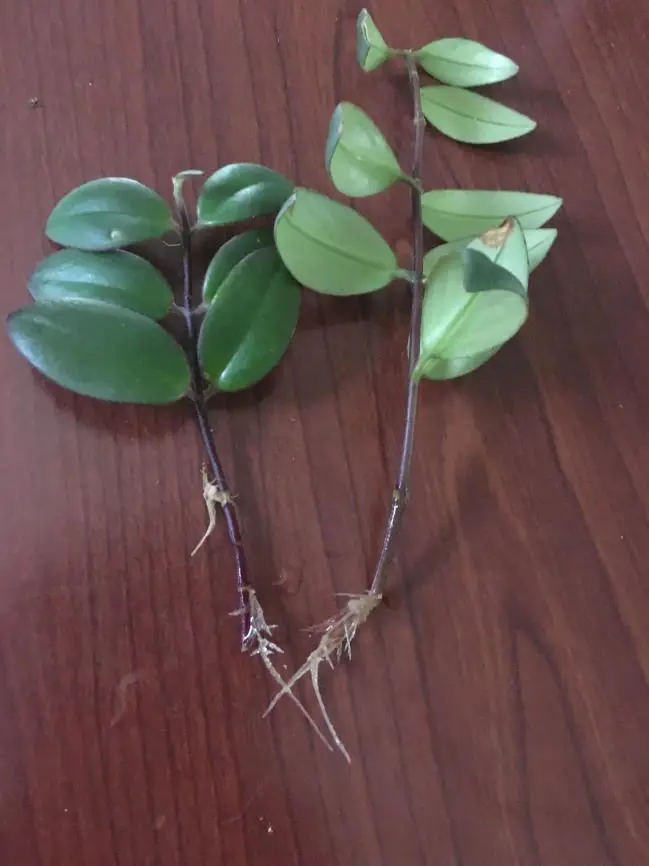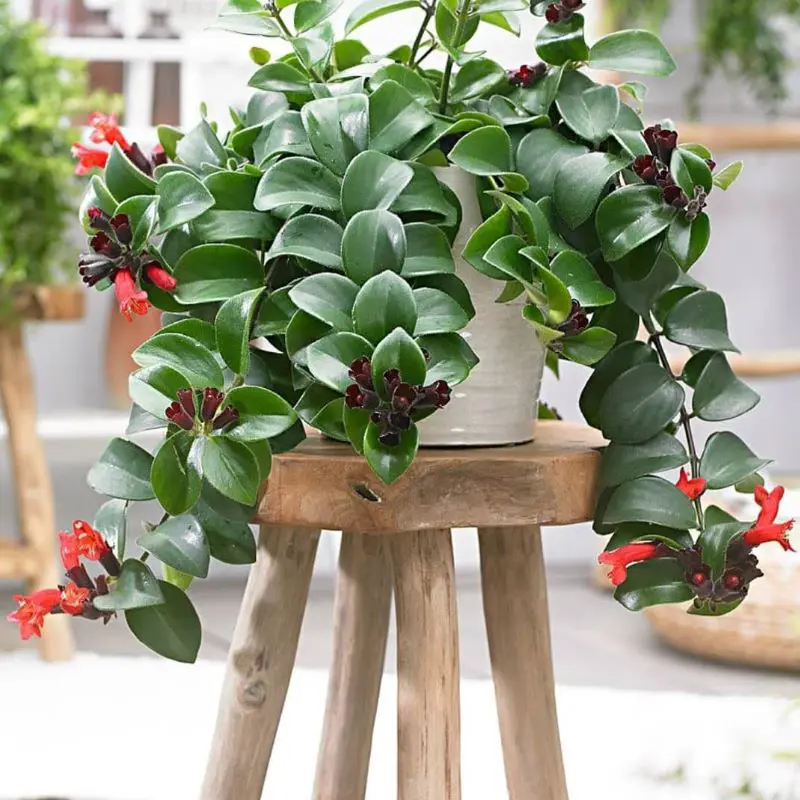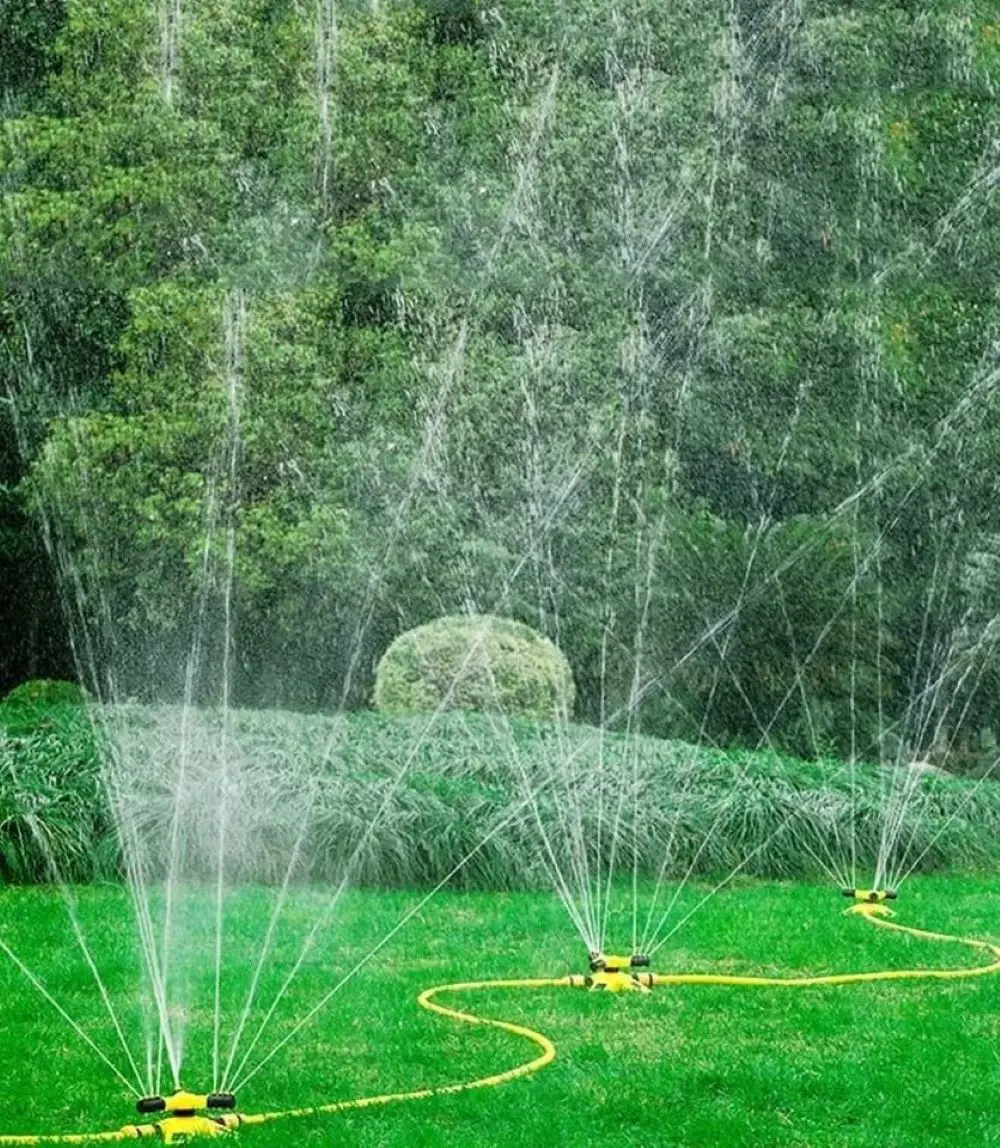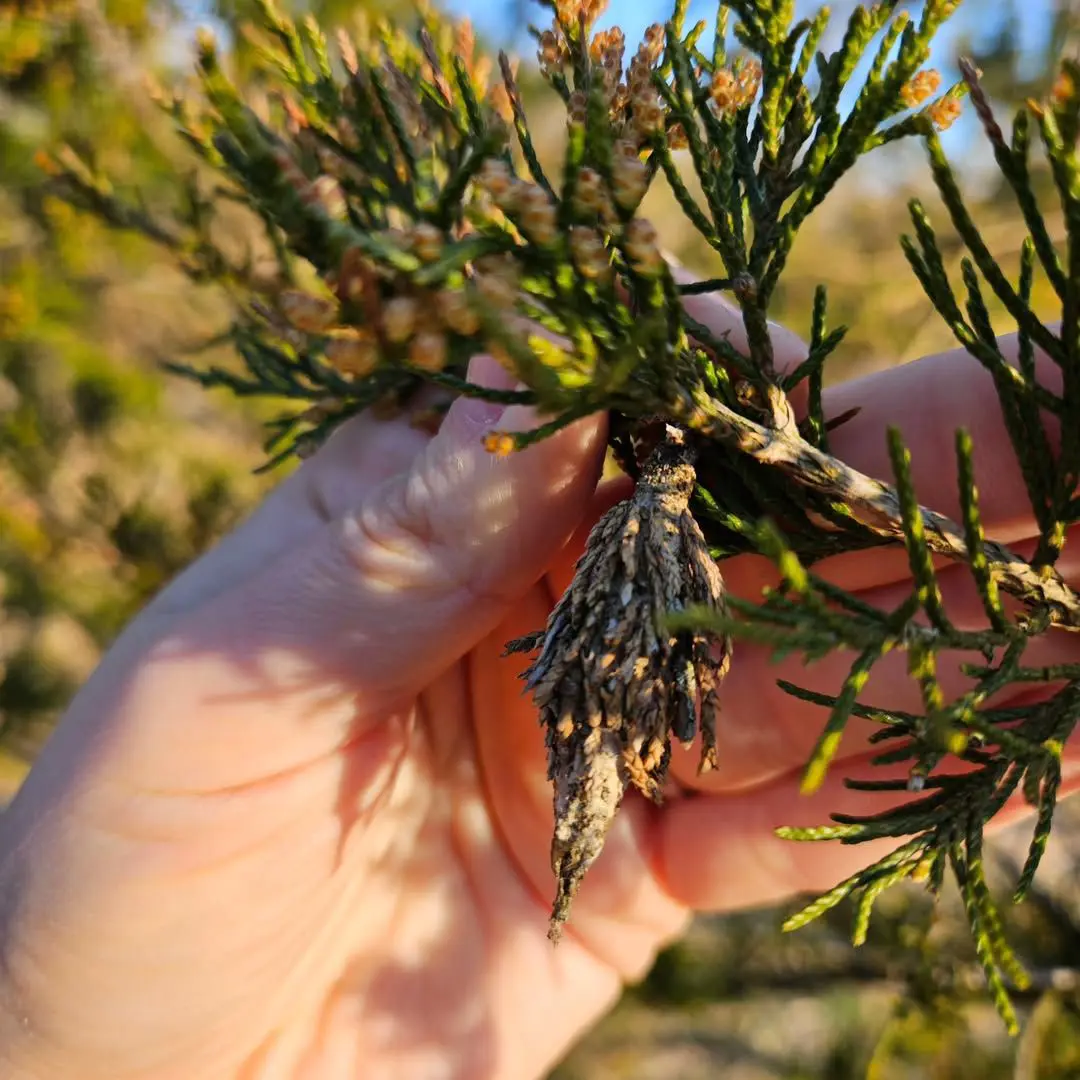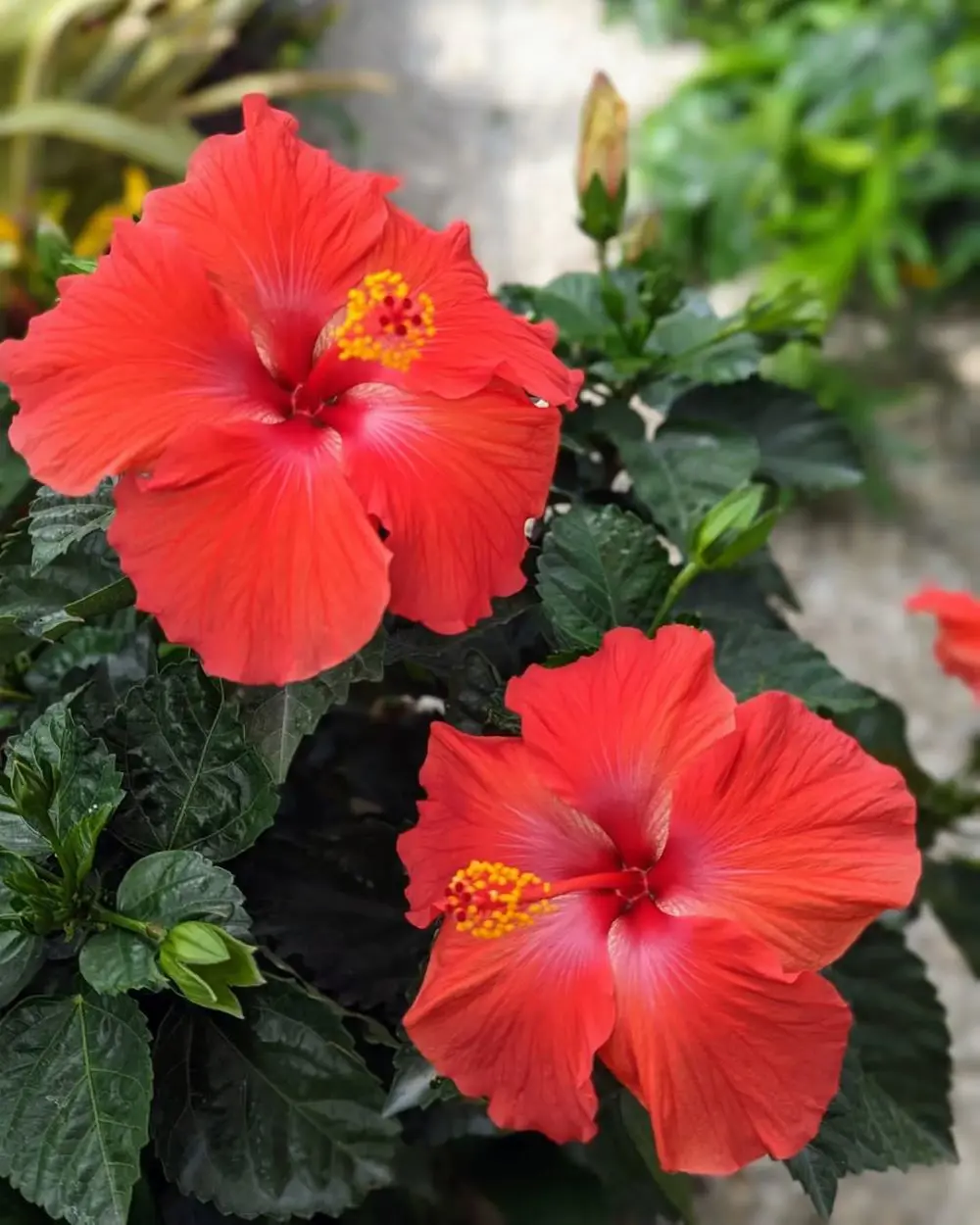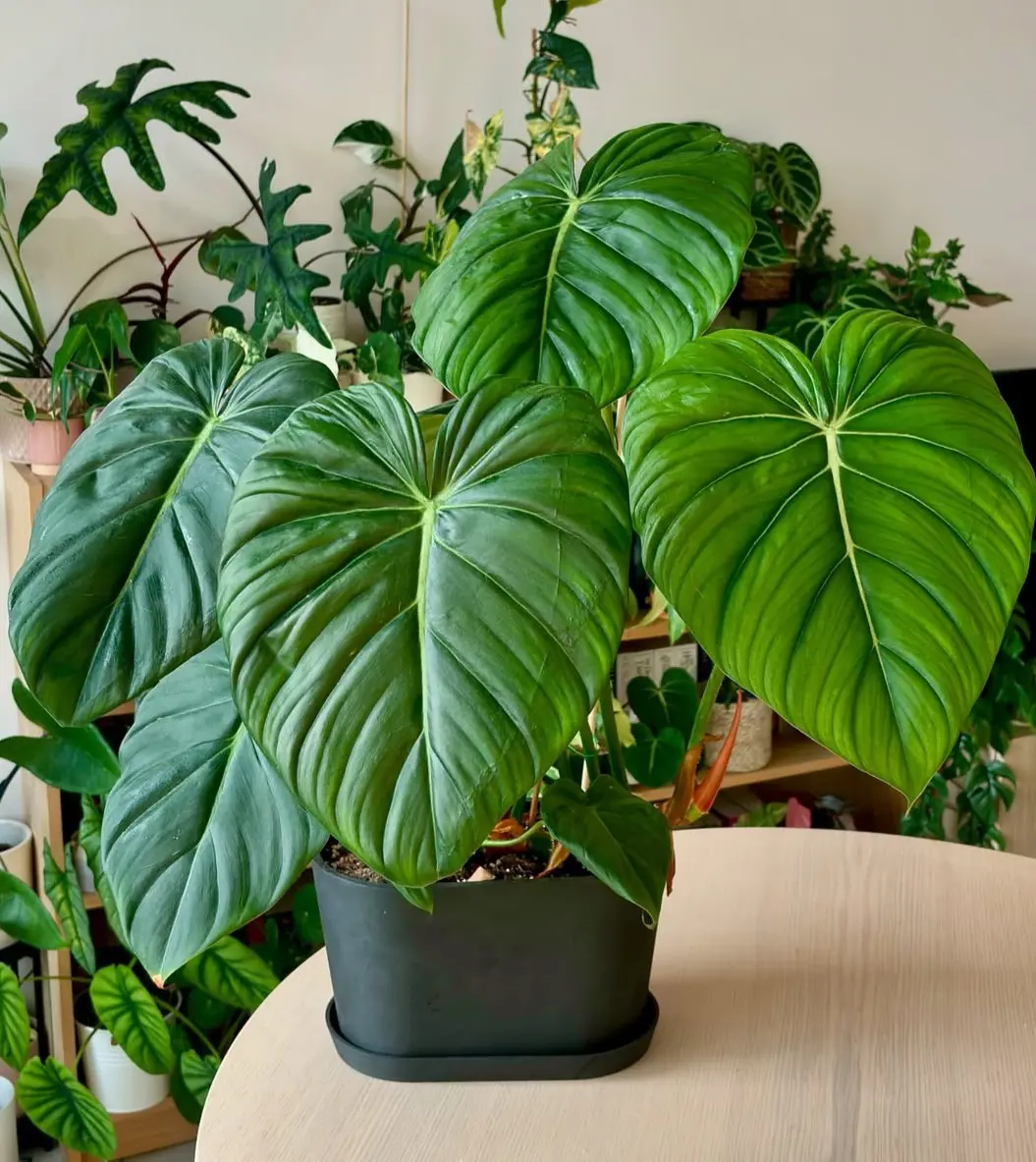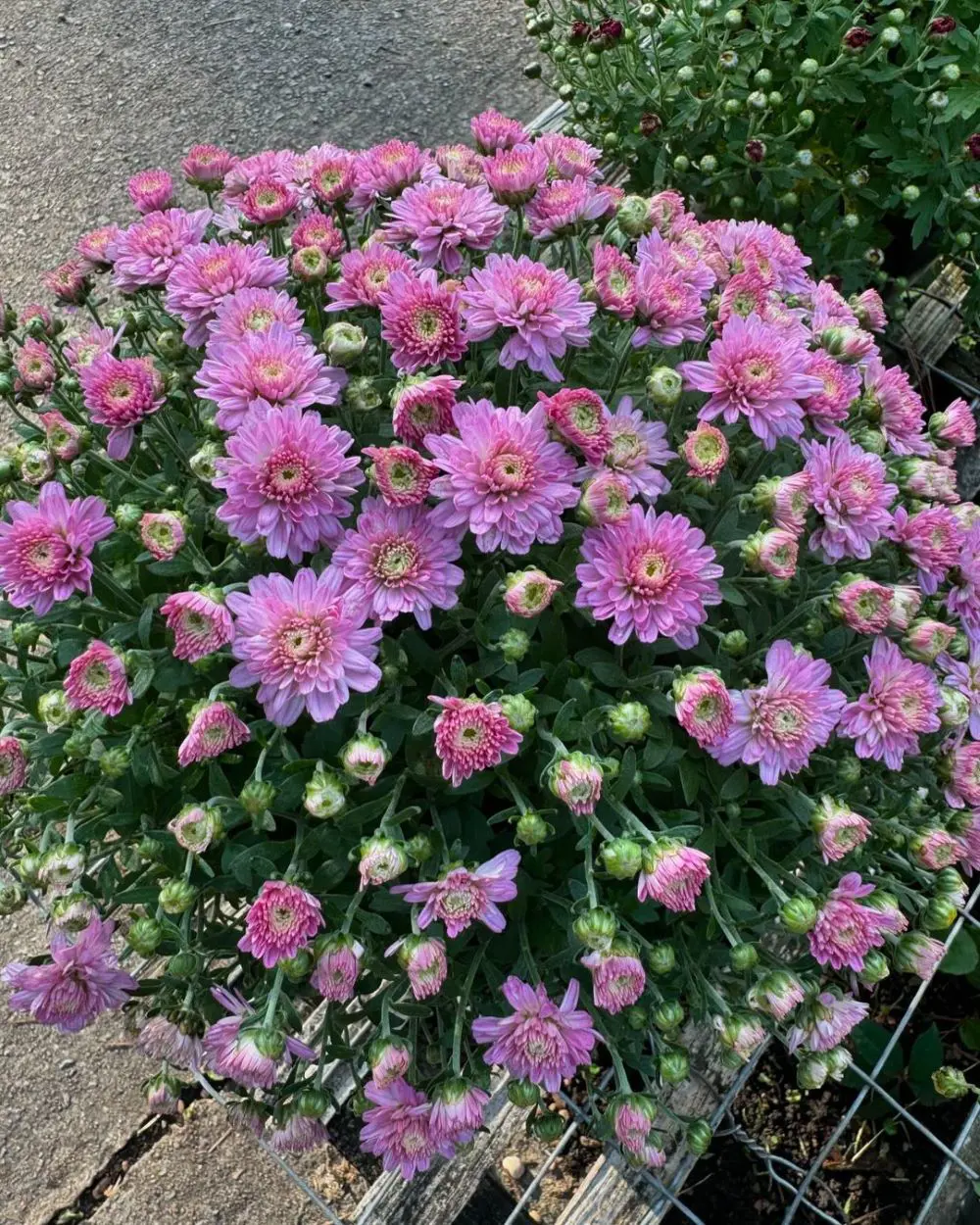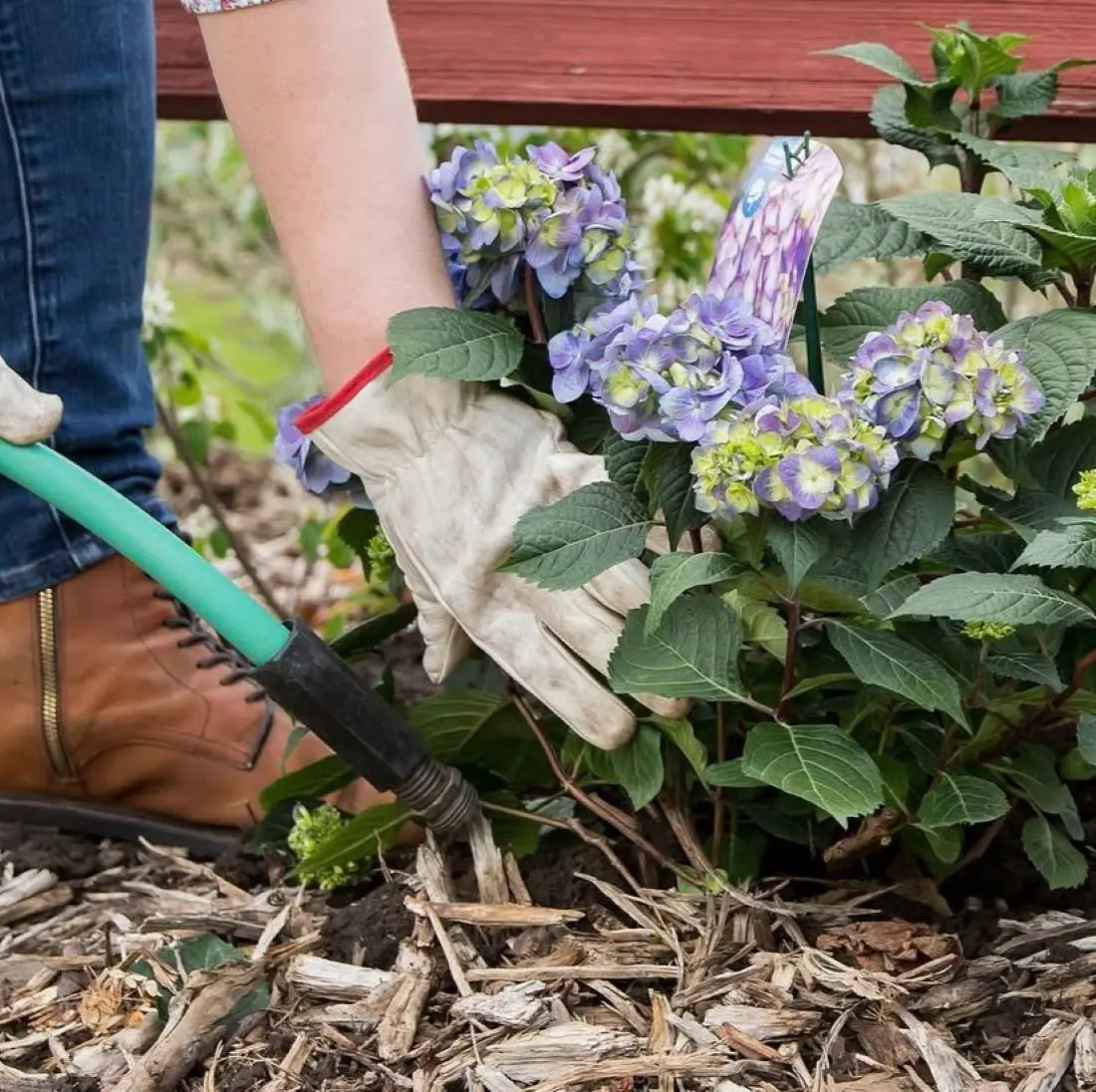Understanding Lipstick Plant
The lipstick plant, scientifically known as Aeschyananthus radicans, is a popular and beginner-friendly houseplant known for its attractive cascading foliage and unique tubular flower that resembles lipstick.
It is an epiphytic plant, meaning it naturally grows on other plant-like trees and prefers well-draining, humid conditions. Similarly, the plant gets its common name from its unique flower-dark-colored tubes that open to reveal bright red blooms, reminiscent of a tube of lipstick.
These plants are also known for their fragrant aroma when in bloom.
Popular Varieties
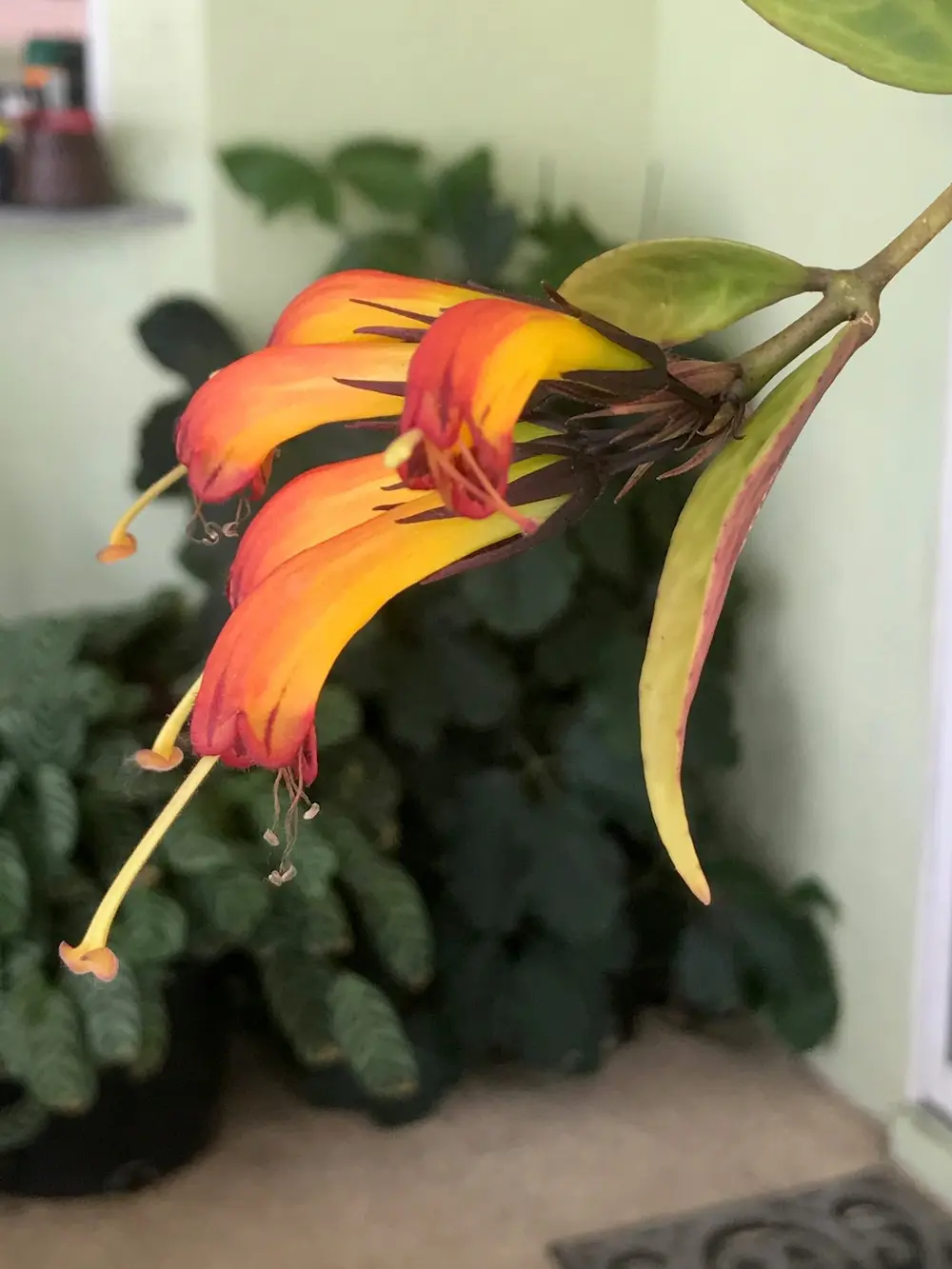
Lipstick plants come in several attractive varieties with different leaf shapes and flower colors, making them a versatile and eye-catching addition to any indoor plant collection. Some of them are given below;
- Curly Lipstick Plant (Aeschynanthus radicans 'Curly'): This cultivar has wavy, curly leaves that give it a unique and eye-catching appearance, differentiating it from the standard smooth-leaved varieties.
- Variegated Lipstick Plant (Aeschynanthus radicans 'Variegata'): The leaves of this variety feature attractive variegation, with patterns of green, yellow, and white, which adds visual interest.
- Tangerine Lipstick Plant (Aeschynanthus radicans 'Tangerine'): It stands out with its bright orange-yellow flowers, rather than typical red blooms.
- Black Pagoda Lipstick Plant (Aeschynanthus longicaulis 'Black Pagoda'): The dark green, almost black foliage of this variety creates a striking contrast with its vibrant orange-red flowers.
- Mona Lisa Lipstick Plant (Aeschynanthus radicans 'Mona Lisa'): This cultivar has a more compact, bushy growth habit compared to the trailing varieties, making it well-suited for growing in containers.
- Rasta Lipstick Plant (Aeschynanthus radicans 'Rasta'): This unique variety features densely curled leaves that resemble dreadlocks, adding a whimsical touch to the plant.
These are just a few of the many interesting lipstick plant varieties available, each with its distinct characteristics and appeal. Regardless of the specific cultivar, lipstick plants make for beautiful, eye-catching houseplants that are relatively easy to care for.
